Anúncios
Start with your budget
You probably already know that buying a home is one of the biggest financial moves you’ll ever make. But how do you figure out exactly what “affordable” looks like for you? Enter the “home affordability calculator.” This handy tool helps you estimate the maximum house price you can comfortably manage without tipping your budget into the red.
The classic rule of thumb, reinforced by financial experts and by resources such as the Fannie Mae website (which offers a home affordability guide), is that your housing costs should land between 25% and 30% of your gross (pre-tax) monthly income. Another guideline often mentioned is the 28/36 rule. It states:
- No more than 28% of your monthly income should go toward housing expenses (mortgage, insurance, property taxes).
- No more than 36% should be allocated to all your debts combined (mortgage plus credit cards, car loans, student loans, etc.).
Whether you’re considering a cozy starter or a place with room to grow, the overarching theme is the same: you’ll want to ensure your monthly payments, plus ongoing costs of homeownership, fit snugly into your budget. Let’s walk through how to do exactly that.
Understand the 25%-30% guideline
When you see that range of 25% to 30% of gross income, it basically aims to shield you from “house-poor syndrome,” where you might be forced to cut back on everyday necessities (or skip the fun stuff) just to cover your mortgage. For example, if you make $4,000 per month before taxes, 25% to 30% suggests a range of roughly $1,000 to $1,200 per month for your housing expenses.
But remember, these figures aren’t set in stone. Some people prefer lower monthly payments to maintain more flexibility for travel, dining out, or saving aggressively for the future. Others with very stable jobs and strong savings might stretch closer to 30%. The sweet spot for you depends on your lifestyle, stability, and financial goals.
Factor in monthly debts
Your other recurring debts, such as student loans or car payments, significantly affect how lenders view your finances. So, if you have hefty monthly payments, it’s wise to aim for the lower end of that 25%-30% range. Lenders often check your debt-to-income ratio (DTI) to see whether those existing obligations leave enough room for a mortgage payment.
DTI is your total monthly debts divided by your gross monthly income. For instance, if you pay $500 on all non-housing debts each month and you earn $4,000, that’s a 12.5% DTI. Under the 28/36 rule, you could add a mortgage payment that pushes your total debt load to no more than 36%. If that mortgage payment also costs around 28% of your income, it fits within the classic lender guidelines. But personal comfort is key—only you can decide if that monthly payment feels right.
Learn key affordability factors
Several elements influence what your home budget should look like. Even if the monthly mortgage payment feels manageable, you still want to pay attention to factors like your credit score, down payment, and even small changes in interest rates that can alter your monthly costs.
Credit score impact
Your credit score isn’t just a number, it’s a snapshot of how reliably you’ve repaid debts in the past. In the context of homebuying, a higher credit score can open up lower interest rates and more appealing loan options. If your score is on the lower side—common conventional lenders usually prefer at least 620—you might see higher interest offers, which bump up your monthly payment. That’s why even a small credit score improvement can translate into meaningful savings over the life of a mortgage.
Before diving into house hunting, check your credit score. If it needs a little TLC, consider paying down existing balances or reviewing your credit report for accuracy. These small efforts boost your odds of snagging a competitively priced mortgage and help you qualify for a higher purchase price if you need it.
Down payment variation
Many folks still assume you need 20% down to buy a home, but that’s not always true. Several financing programs today allow as little as 3% or even 0% down, depending on the loan type. To illustrate, if you’re eyeing a $300,000 home:
- 3% down is $9,000
- 10% down is $30,000
- 20% down is $60,000
A larger down payment reduces your monthly mortgage payment and removes the requirement for private mortgage insurance (PMI) on a conventional loan (if you reach that 20% mark). But if saving that big chunk seems out of reach, you might explore down payment assistance programs. These programs can help eligible buyers secure lower down payment amounts or special loans with favorable terms.
Below is a quick look at how different mortgage types compare. These are general guidelines and vary by lender:
| Mortgage type | Down payment range | Credit score requirement | Key benefit |
|---|---|---|---|
| Conventional | 3%-20%+ | Typically 620+ | Lower rates possible, PMI if <20% down |
| FHA | 3.5% or more | Typically 580+ | Lenient credit requirements, must pay FHA insurance |
| VA | 0% | Typically 620+ | For qualified veterans, no PMI |
| USDA | 0% | Typically 640+ | Rural area focus, potential income restrictions |
Note: Requirements can shift with market conditions, lender policies, and borrower qualifications.
Use a home affordability calculator
Even if you’ve done your homework on down payments, debt-to-income ratio, and credit requirements, it’s helpful to have a concrete sense of your maximum price range. That’s where a home affordability calculator is a game-changer. Major financial sites like NerdWallet provide an affordability tool that takes into account your household income, monthly debts, and available savings to estimate what you could pay for a home.
Some calculators include a Simple View and an Advanced View. The Simple View typically looks at your basic income and debts, giving you a quick ballpark figure. The Advanced View adds details like:
- Homeowners insurance (the annual premium you pay for coverage)
- Property taxes (which vary significantly by location)
- Homeowner association (HOA) or condo fees
- Mortgage insurance (if you put less than 20% down with a conventional loan or if you get an FHA loan)
By itemizing these line items, you get a more precise monthly payment, giving you a better idea of how that fits into your monthly budget. Of course, these calculators only provide an estimate. Actual loan approval depends on a more thorough review by mortgage lenders, who will check your credit history, job stability, and overall financial picture.
How to interpret your results
When you see the results, you might be pleasantly surprised by the maximum amount or, in some cases, disappointed that it’s not as high as you hoped. Keep in mind a few tips:
- Calculators are guides, not guarantees. For an official quote, you’d need to reach out to lenders.
- If the maximum home price seems too high for your comfort, it’s OK to aim lower. You’ll likely have more financial breathing room, which can be especially reassuring if unexpected expenses pop up.
- If the number seems too low, look for ways to boost it. Improving your credit, paying down debts, or exploring alternative loan programs can sometimes raise your target home price.
Why calculators matter
The whole point of using a home affordability calculator is to avoid biting off more than you can chew. Housing costs often extend beyond the mortgage check. Repairs, landscaping, and eventual upgrades can eat into your finances. When you have a solid baseline from a calculator, you’re less likely to wind up house poor and more likely to enjoy life (and homeownership) comfortably.
Compare different mortgage options
Around 74% of home buyers finance their purchase with a mortgage, according to a 2025 report by the National Association of REALTORS® Research Group. But not all mortgages are created equal. Different programs cater to different financial situations, offering flexibility around the size of the loan, the down payment, credit requirements, and more.
Types of mortgages to consider
- Conventional: A standard option typically requiring at least 3% down, but 20% is preferred to avoid PMI.
- FHA: Ideal if your credit is below average or you can’t afford a large down payment. It allows 3.5% down but carries mortgage insurance for the life of the loan (unless refinanced later).
- VA: Specially for qualified veterans and active-duty service members. It requires no down payment or PMI, though there is a funding fee.
- USDA: Geared toward rural areas. It requires no down payment but has income and location restrictions.
If you’re unsure which is right for you, you might benefit from a chat with a mortgage professional or a quick look at the types of home loans to understand further details. Comparing lenders can also help you land better interest rates and terms. One lender might offer a perk (like no origination fee) that another doesn’t. With just a small difference in rates, you can afford a slightly more expensive home or pay a lower monthly amount.
Impact of interest rates
Seemingly tiny shifts in interest rates can significantly change what you can afford. Let’s say you’re looking to borrow under a 30-year mortgage:
- At 6.5%, you might comfortably pay for a $215,700 house, with an estimated monthly payment around $1,633 (assuming a certain down payment and other approximations).
- If rates dip to 5.5%, that same monthly payment might suddenly cover a $239,000 home, or you can save $133 each month by sticking with the same $215,700 price.
This difference adds up over time. That’s why you’ll see experts urge buyers to compare multiple quotes before committing. Even a half-point drop can noticeably shift your budget.
Prepare your down payment
Unless you’re going with a VA or USDA loan, you’ll need some amount of cash up front to close on the property. Most mortgages require at least a 3% down payment, though some lenders might ask for more. If you have the aim (and ability) to put 20% down, you can avoid private mortgage insurance on a conventional loan, potentially saving $100 to $300 (or more) every month, depending on the loan size.
Where to find down payment help
If saving for 20% (or even 3% to 5%) is daunting, seek out assistance. There are many national, state, and local down payment assistance programs that provide grants or low-interest loans. These programs often target first-time or moderate-income buyers who have reliable earnings but lack significant lump-sum savings.
Typical forms of assistance may include:
- Grants (no repayment needed)
- Second mortgages with deferred payments
- Low-interest loans with forgiving payback schedules
- Tax credits for first-time buyers
Some lenders, such as Wells Fargo, have special programs to reduce your out-of-pocket expense. A 3% down option is common, and if you’re qualified, you could get help with closing costs too. These offerings vary widely by region, so it’s worthwhile to investigate what’s available in your area.
Balancing down payment with other costs
Sometimes it’s tempting to pour everything into the down payment to shrink your monthly mortgage, but you don’t want to drain your savings entirely. Homeownership inevitably has random elements: a leaky roof, a broken water heater, or even an unforeseen job change. Keeping a financial cushion means you can handle emergencies without resorting to high-interest credit card debt.
Balance upfront and monthly costs
Beyond the down payment, homebuyers face various other upfront costs. Closing costs can range from 2% to 5% of the home purchase price; these include lender fees, appraisal fees, and title insurance. Plus, you have optional costs like a home inspection (highly recommended) before finalizing the deal. While not always mandatory, an inspection helps you spot potential repairs that might become budget-busters.
Monthly costs to consider
Once you move in, your monthly mortgage payment is just one slice of your total housing budget. Don’t forget about:
- Mortgage insurance: If you pay less than 20% down on a conventional loan or use an FHA loan, you’ll have to include this.
- Property tax: Varies by location but can be substantial in certain states.
- Homeowners insurance: Protects against damage or loss. If you’re in a flood zone, you may also need separate flood coverage.
- HOA or condo fees: Common in neighborhoods with shared amenities or condos.
- Utilities: Electric, gas, water, and internet can vary widely depending on size and location.
- Maintenance: Ideally, budget 1% to 3% of your home’s value each year for maintenance costs (like HVAC tune-ups or landscaping).
Keep a savings cushion
Homeownership can be unpredictable. Beyond the big stuff (such as a new roof), smaller but necessary fixes can creep up. Maintaining an emergency fund equal to three to six months of living expenses is a good general practice, though you might choose more or less based on your comfort level.
A home affordability calculator usually doesn’t factor in all your personal choices, such as a desire to travel frequently or save aggressively for retirement. That’s where your own budgeting insight matters. If you enjoy a certain lifestyle, picking a smaller home than what the calculator suggests might be the right move, ensuring you keep disposable cash for fun and future planning.
Wrap up your plan
Figuring out “How much house can I afford?” isn’t just a math problem, it’s about matching your goals, finances, and lifestyle. Here are your core steps in one quick list:
- Check your finances
- Calculate your monthly income, debts, and typical spending.
- Aim for total housing costs at 25%-30% of your gross monthly income, or align with the 28/36 rule if that’s more comfortable.
- Strengthen your credit score
- Pay down existing balances to lower your DTI.
- Dispute any inaccuracies on your credit report. Even a small improvement can help your interest rate.
- Save for upfront costs
- Plan for your down payment, whether that’s 3%, 20%, or somewhere in between.
- Don’t forget closing costs (2%-5% of the home’s price), plus inspection fees.
- Use a home affordability calculator
- Play with different numbers (income, down payment, interest rates) to see how your maximum price shifts.
- Test both the simple and advanced versions to factor in property taxes, insurance, HOA fees, etc.
- Compare lenders
- See what different lenders offer in terms of interest rates, closing costs, and overall fees.
- Remember to explore the best mortgage lenders for a broader range of rates and terms.
- Seek pre-approval
- Going through the pre-approval for a home loan process gives you a firm understanding of how much mortgage you qualify for.
- Pre-approval also shows sellers you’re a serious buyer, which can help in competitive markets.
- Choose the right mortgage option
- Look into specialized loans or types of home loans, whether that’s conventional, FHA, VA, or USDA.
- Evaluate how each program affects your down payment, interest rate, and monthly costs.
- Keep a rainy-day fund
- Homeownership includes unexpected maintenance and repairs. Having spare cash gives you peace of mind.
When in doubt, it never hurts to consult a financial advisor or mortgage professional who can tailor advice to your specific circumstances. After all, a home is more than just property—it’s your living space, a potential investment, and a cornerstone of your overall financial plan.
One final tip: your budget comfort zone may not match the lender’s upper limit. If you’d rather keep your monthly expenses low for travel, childcare, or hobbies, go for it. Owning a home you can truly afford—and still enjoying life’s perks—feels far better than wrestling with an oversized mortgage.
Where to go from here
Buying a home can be a fulfilling journey. It’s not just about locking down an address, it’s about creating a space for your future. With a clear idea of your monthly comfort zone, a sense of which mortgage options fit your finances, and the insights from a home affordability calculator, you’ll be well prepared to make an offer that won’t strain your daily life.
If you’re still on the fence, do a little more homework. Lenders often provide online applications for quick quotes and basic prequalification. You can also speak with real estate agents, who see buyer budgets in action every day—just keep any potential conflicts of interest in mind. Home affordability is deeply personal, so lean on resources you trust, but ultimately choose a path that suits your outlook and wallet.
However you choose to proceed, learning to balance monthly costs, upfront expenditures, and your personal financial goals can turn homeownership into a source of stability rather than stress. Get your numbers in order, explore different mortgage types, and keep a financial cushion for both planned and unplanned events. By following these steps and reviewing the results you get from a home affordability calculator, you’ll be ready to find a home that fits your lifestyle—without breaking your budget. Happy hunting!








